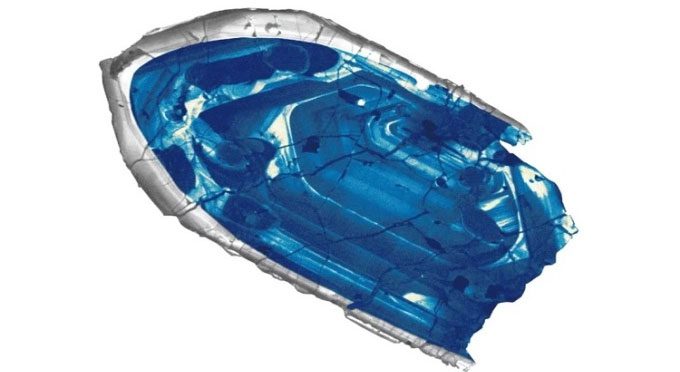A stunning blue zircon crystal dating back about 4.4 billion years is evidence of the oldest piece of Earth’s crust.

Zircon crystals formed just 160 million years after the Solar System. (Photo: John Valley).
The ancient crystal was discovered at the edge of Western Australia in a remote rock formation known as Jack Hills. In a 2014 study published in the journal Nature Geoscience, scientists determined that the age of the specimen is 4.39 billion years, making it the oldest solid object ever found on Earth, according to IFL Science.
Prior to this study, scientists knew that zircon was among the oldest geological materials on the planet, forming as a mineral within magma as it cooled. Zircon is incredibly hard and can endure billions of years, even under extreme temperatures and pressures. This durability makes them perfect time capsules preserving Earth’s early history. Zircon crystals are extremely small, nearly invisible to the naked eye.
Formed just 160 million years after the Solar System came into existence, the specimen was created only a few decades after the primordial Earth collided with a Mars-sized body, resulting in the formation of the Moon and turning the planet into a molten red sphere. Given that the zircon crystal is approximately 4.4 billion years old, Earth must have cooled and developed a crust by that time. This timeline indicates that the prehistoric zircon specimen is evidence that Earth developed a liquid water environment about 4.3 billion years ago, and life could have emerged soon after.
The study’s results help scientists understand how Earth cooled and became a habitable environment. They can also explore how other habitable planets formed. This discovery strengthens the theory of “early cold Earth”, suggesting that temperatures were low enough to sustain oceans and that life could form earlier than previously thought, according to Professor John Valley, a geochemist at the University of Wisconsin-Madison.





















































